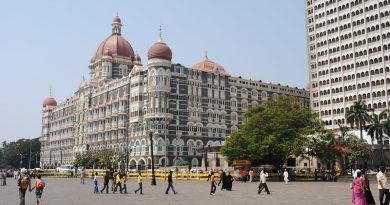Extreme Australia
CLIMATE
It’s hard to believe that one country can be home to arid deserts, lush rainforests and sprawling, temperate metropolises, but Australia’s sheer vastness means that it plays host to a number of different climates. While predominantly a desert climate, which composes the country’s famous “Outback”, Australia is also home to temperate climates, which are found in the more populated areas. This is particularly prominent on the South-eastern coast, where Australia’s two most populated cities-Sydney and Melbourne, as well as the capital city of Canberra are located. In addition, the Northern part of the continent has a more tropical climate, which includes a number of rainforests.
As one of the many nations affected by the El Nino Southern Oscillation, Australia is plagued by a number of severe weather patterns, with tropical cyclones, heat waves, droughts and especially bush-fires posing a number of environmental problems. Due to its tropical climate, the north-western part of Australia is most prone to cyclones, particularly in the Broome and Exmouth regions of Western Australia. Occurring five to six times per year on average, cyclones at their worst in Australia have unleashed billions of dollars of property and infrastructural damage, several fatalities and devastating environmental damage. Cyclone Tracy in 1974 was, adjusted for inflation, Australia’s costliest cyclone, causing $4.45 billion(2014 AUD) in property damage. Cyclone Monica in 2006 was the strongest, reaching wind speeds exceeding 350 km/h and causing significant deforestation within the area.
Cyclone Mahina in 1899 was the deadliest, leaving 400 dead in its wake; the largest death toll from a natural disaster in Australia’s history. Due to the low humidity and lack of rainfall in the more arid regions of Australia, bush-fires are prominent during the summer months, especially in the state of Victoria. Although warning systems have been put in place to reduce as much damage as possible, bush-fires remain a problem to this day, often causing fatalities and property damage. The most deadly bush-fires commonly occur in droughts, such as the notorious 2009 Black Saturday Bush-fires, which saw 173 people die. Despite the threats they present, a number of indigenous flora species are reliant on bush-fires in order to reproduce. Therefore, bush-fires are surprisingly, a pivotal component of Australia’s ecosystem.
LANDSCAPE
The Three Sisters, Katoomba, NSW Australia by Brodie Karel , Flickr Commons
Due to the dominant desert climate, much of Australia’s terrain is barren and unable to support human civilization. Composing 18% of the Australian continent, the various deserts cover 1,371,000 square kilometers of land. There are ten distinct deserts in Australia-the Great Victoria Desert (Western Australia/South Australia), the Great Sandy Desert (Western Australia), the Tanami Desert (Western Australia/Northern Territory), the Simpson Desert (Northern Territory/Queensland/South Australia), the Gibson Desert (Western Australia), the Little Sandy Desert (Western Australia), the Strzelecki Desert (South Australia/Queensland/New South Wales), the Sturt Stony Desert (South Australia/Queensland/New South Wales), the Tirari Desert (South Australia) and the Pedirka Desert (South Australia).
EXPLORERS
Due to the hostile environment in Australia and the immense distance from Europe, many of the explorers who played key roles in the country’s discovery met unfortunate ends, often dying during the journey or simply vanishing without a trace. George Bass, a naval surgeon, was among the most famous. Along with his travelling companion and dear friend Matthew Flinders, Bass was most famous for discovering Van Diemen’s Land (modern-day Tasmania). They were also known for their exploration of Southern New South Wales and charting the Singapore Strait for the first time.
Looking to make a fortune for himself, Bass embarked for Peru, intending to export llamas, only to disappear on the journey without a trace. Suffering a similarly mysterious fate was the German-born explorer Ludwig Leichhardt, whose epic 3000 mile journey from Darling Downs to Port Essington was unprecedented at the time, earning him the title ‘Prince of Explorers’. Leichhardt’s second attempt at traversing Australia from east to west however, ended in tragedy.In a party of seven men and much livestock, the expedition was expected to take between two and three years. However, the party were never heard from again, and it is assumed that they died somewhere in the Great Sandy Desert.
Although there are a number of theories about his fate, which sprouted from the findings of search parties, such as being killed by hostile natives, the truth still remains elusive today. Another early casualty of the harsh Australian desert was Alfred Gibson, a young man who accompanied the famous Australian explorer Ernest Giles on his second expedition towards the Indian Ocean. When Gibson’s horse died, Giles tasked him with riding back to camp on his own horse to get help while he made his way back on foot. Reaching the camp eight days later and at the brink of exhaustion, Giles discovered that Gibson had disappeared along the way. Commissioning a search for his lost companion the next day, Giles was unable to pick up a trace of his companion, and with supplies dwindling, gave up the search, while naming the Gibson Desert after his vanished companion.
As the twentieth century progressed, aeronautical exploration became increasingly common. However, due to the limitations of technology of the time, many of these pioneers did not survive their journeys. Australia’s most famous pilot of this era, Charles Kingsford Smith was one of these casualties. Having survived a number of near-death experiences, including nearly drowning at Bondi Beach as nine-year old, serving at the catastrophic Battle of Gallipoli and making the first plane journey across the Pacific Ocean from California to Brisbane.
Amongst his other achievements were the record for fastest aerial circumnavigation of Australia and for flying from England to Australia. Indeed, it was this route, which would eventually lead to his demise, with Smith disappearing off the coast of Burma five years after setting the record, in 1935. Many other notable lost Australian explorers’ fates were not so shrouded in mystery. Indeed, the founder of Australia himself Captain James Cook met his end miles from Australia in the Hawaiian Islands, where he was eaten by cannibalistic natives.
One of the most accomplished explorers in British history, Cook was responsible for the first European contact with Eastern Australia and the Hawaiian Islands, in addition to being the first to circumnavigate New Zealand whilst mapping the Pacific Islands to an extent never before accomplished. On his third and final Pacific expedition, Cook made camp in Kealakekua Bay, Hawaii during the natives’ religious ceremony Makahiki dedicated to their deity Lono. Although the Hawaiians initially received Cook warmly, when he returned shortly after setting sail, they grew suspicious, and eventually hostile. They eventually killed him in a stabbing frenzy before eating his remains.
Meeting a similar fate many years later was the explorer Edmund Kennedy, a charismatic young man from a wealthy background. Making a name for himself as second-in-command of Thomas Mitchell’s expedition to the Gulf of Carpentaria, he eventually assumed control of an expedition of his own to the mouth of the Victoria River. He met his end on his final journey, following the coast to Cape York. However, he was not sufficiently prepared. Growing weaker in the hostile terrain, and with many of his party already dead or dying, the group became targeted by a group of Aboriginals, who speared Kennedy. Only Kennedy’s servant Jackey Jackey and two others survived.
Chief among the explorers who were found too late was Comte de la Perouse, considered by many as the Pacific’s greatest explorer after Cook, his expeditions followed a similar route to Cook. He did explore Alaska and the Northern Pacific as well before being ordered by his superiors to investigate Botany Bale, the first British settlement in Australia. After completing this tasked, his crew set sail for Polynesia, only to not be seen again. Four decades later, the remnants of the expedition were found by Irish sailor Peter Dillon. While one of La Perouse’s ships was destroyed by the cyclone, the other survived the storm, with many crew members making it to shore. Although many were killed by natives, a handful survived and left the island on a makeshift raft, disappearing forever while two remained on the island until they died. The exact nature of La Perouse however, remains a mystery.
Famous Australian explorers Burke and Wills were similarly found too late. Leading an expedition of nineteen men from Melbourne to the northern parts of Australia, their inexperience and rash leadership decisions hampered their expedition’s success, resulting in their deaths from malnutrition. Indeed, it is believed that the pair would have survived if not for extremely bad luck and poor communication. Only one member of the party, John King, completed the expedition and returned home to Melbourne.
Suffering a similar fate in the Australian Outback was Lewis Lasseter in 1931. An eccentric and perhaps even unhinged explorer, Lasseter lead an expedition to a massive gold mine in the heart of Central Australia. The problem was, however, that the mine did not exist. A failed inventor with a history of self-delusion, he managed to put together an expedition to the fabled “Lasseter’s Reef.” However, as it became more and more clear that Lasseter’s claim was greatly exaggerated, friction developed within the group. The other expedition members doubting his sanity, Lasseter soon found himself abandoned. Although a group of Aborigines helped feed and shelter the erratic explorer, he eventually died of malnutrition, his remains found shortly afterwards.
One of Australia’s aeronautical pioneers, Bert Hinkler, was also found too late. The first man to fly by himself from England to Australia, and across the Southern Atlantic Ocean, as well as an early innovator in building the aircraft, he was killed when trying to break the record from England to Australia, crashing in the Tuscan Mountains, Italy. His body was recovered shortly afterwards, and was buried in a full military ceremony under the orders of Italian dictator Benito Mussolini.
Another aviator who met a similar fate was Hinkler’s fellow countryman Bill Lancaster. Never breaking the records set by Hinkler, Lancaster’s achievements are often overshadowed by his turbulent and controversial personal life. He was believed to have murdered American writer Haden Clarke, his former lover’s fiancé, and narrowly escaped execution. After the trial, Lancaster found himself broke and alone, and decided to attempt to break the record for the England-to-South Africa flight. This was to be his final voyage however, and his aircraft crashed in the Sahara Desert. Although he survived the initial crash relatively unscathed, the search party arrived too late, and he died eight days later.
PREDATORS
Adding further credence to Australia’s dangerous reputation is the vast assortment of predatory creatures, which call the continent home. These range from venomous creepy-crawlies to man-eating giants, which, although not as harmful as one might think, are still not to be trifled with.
Spiders are particularly prevalent, being found not only in the inhospitable wilderness but also in the cities and the suburbs. Deadly arachnids of Australia include the Redback spider and the Sydney Funnel-web spider, both of which contain potent venom harmful to humans. Despite this, since the introduction of antivenom and effective first aid medical care, there have been no recorded deaths from spider bites in Australia.
Similarly, Australia is home to a number of the world’s deadliest snakes, which include the Eastern and Western brown Snakes, the Tiger Snake, the Desert Death Adder and the Inland Taipan. While fatal snake bites are infrequent and often occur when the creature is provoked, a handful of deaths still occur each year, predominantly from the Eastern Brown snake. Interestingly, the Inland Taipan, despite being Australia’s most venomous snake, is responsible for very few deaths due to its shyness.
Australia is equally notorious for its native man-eating predators such as sharks and crocodiles. Australia has the second most shark attacks in the world as well as the highest number of fatalities at 202. Western Australia is considered to be the deadliest place in the world for shark attacks. The Salt water Crocodile is also one of Australia’s most deadly man-eaters. However, there are very few casualties, with usually only one or two fatal attacks being reported per year.
ABORIGINES
A significant social issue facing Australia throughout the entirety of the nation’s existence is the uneasy relationship with its indigenous population, commonly referred to as Aborigines. Disposessed of their land by the British upon their arrival, they have been subject to frequent mistreatment over the past few centuries, with social inequalities still remaining a major issue today. Indeed, the impact of the British on the Indigenous population was almost genocidal in nature. The settlers brought with them European diseases such as smallpox and influenza, which spread rapidly across Indigenous communities, devastating their population. Under the ignorant assumption that the Aboriginal people were nomadic and had no concept of land, they found themselves driven from their own land.
In addition, alcohol, opium and tobacco also found their way to Australia through the settlers, which had a severe effect on Aboriginal communities, with substance abuse remaining a major problem among Indigenous Australians today. The combination of these factors, as well as direct violence resulted in the population dropping by 90%. There was a prolonged conflict between settlers and the natives over the course of the 19th century, with Myall Creek Massacre of 1838 being perhaps the most notorious example of this, which saw almost 30 unarmed Aborigines murdered by settlers.
The subsequent execution of seven of the eleven killers was the first time a white man had been executed for killing an Indigenous Australian. It was in the nearby island of Tasmania however where physical violence was its worst. In what was dubbed the “Black War”, virtually the entirety of the Palawah population was killed in a virtual holocaust. Although some conciliations were made, relations remained hostile during the twentieth century. During the early 1960s, all Aboriginals were eventually given the right to vote in all states, and over the course of the latter half of the twentieth century, the Indigenous population were eventually given the human rights which had been stripped entirely of them upon the arrival of the British.
Up until the 1970s, the Australian government practiced the policy of removing Aboriginal children from their families in an alleged attempt to protect the children from the Aboriginal population’s significant population decline, but more significantly, to prevent miscegenation. This policy had a highly detrimental social effect on the Aborigines, significantly hampering the process of intergration. A study showed that Aboriginal people were far more likely to have a police record and to use illegal substances than white Australians. Many of these problems remain apparent in Australian society today, and although relations have significantly improved, an underlying sense of tension remains. Indeed, it was not until 2008 that the Australian government offered an official apology to the Aboriginal people, over 200 years after colonization.
IMMIGRATION
After its discovery in 1778, Australia became a major colony of the British Empire, with the British determined to promote a British way of life. Nonetheless, there were several waves of immigrants from other countries, particularly from Asian countries, whom the British regarded with suspicion. This was especially prominent during the Gold Rush of the 1850s,which saw a significant boom in population. The Chinese migrants found themselves subjected to major discrimination and restrictions, which made it difficult for them to remain in Australia. In 1901, the Immigration Restriction Act was passed, which was widely considered to be the beginning of the White Australia Policy, which prioritized British migrants over others for several years. This policy was gradually disassembled over the course of several successive administrations following the Second World War, and immigration from several different ethnic backgrounds still occurs today.
CONVICTS
Given the harsh climate and distance from the rest of the Western world, one of the central reasons for British settlement in Australia was the construction of a massive penal colony due to the overpopulated prison system in the UK. Over the course of 80 years it is estimated that over 165,000 convicts were sent to Australia. Indeed, it was not until 1793 that the first free settlers arrived in Australia. Upon arrival, there was a high mortality rate amongst the convicts due to food shortages and insufficient farming skills, which was only hampered by the arrival of the Second Fleet, which brought even more sick and dying convicts. If convicts were well-behaved, they were granted a ticket of leave, which allowed them some levels of freedom. When the convict’s sentence ended, they were allowed to choose whether to return to England or to remain in Australia as a settler.
Those who misbehaved however would suffer additional punishment such as solitary confinement. Although the transportation of convicts to Australia continued for nearly a century, as the numbers of settlers grew, so did opposition to the presence of felons in their newfound home. Thus, the practice of sending convicts to Australia was gradually phased out, ending first in New South Wales in 1840, in Tasmania (then known as Van Diemen’s Land) in 1853 and in Western Australia in 1867. South Australia and the Northern Territory, contrastingly, had never directly accepted convicts from Britain.
By Louis Cross




